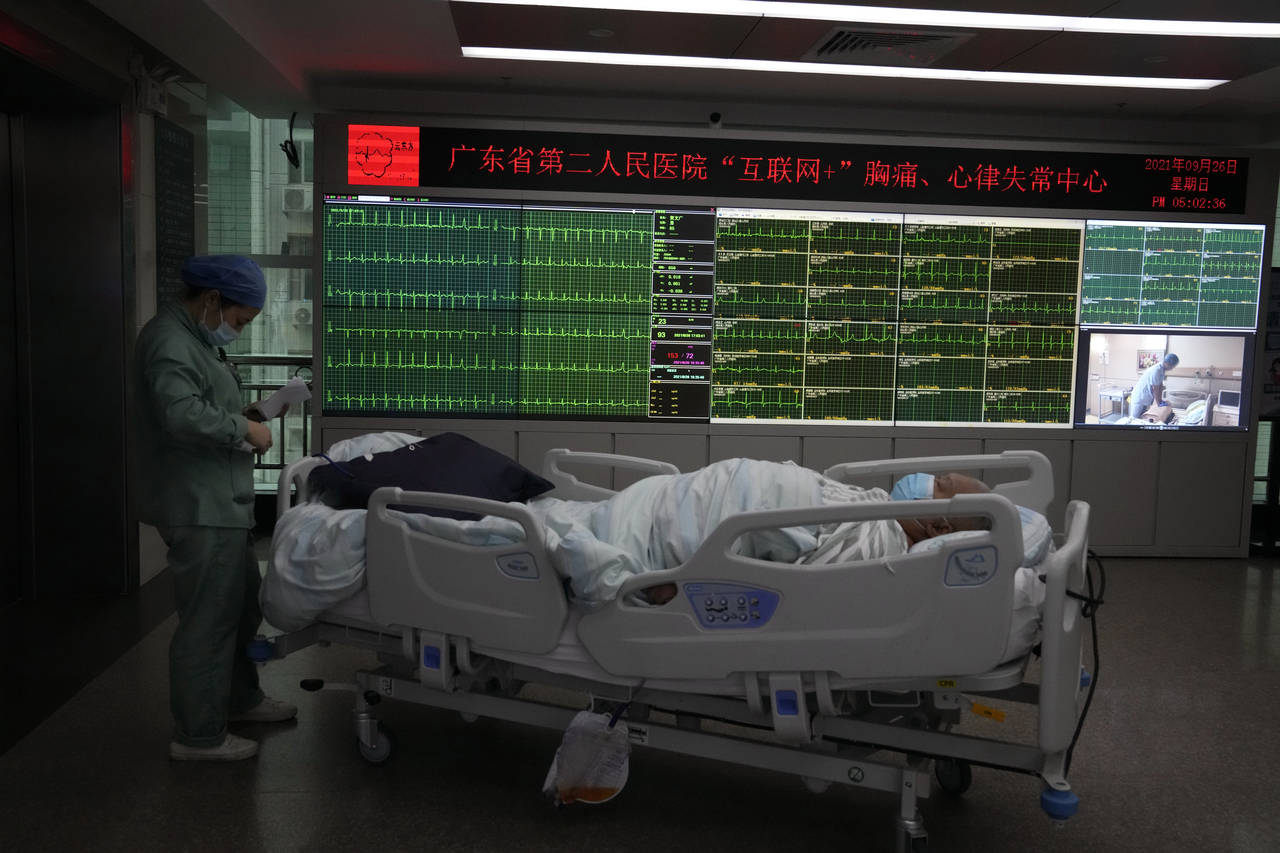Amid US sanctions, Huawei highlights uses of 5G technology
[ad_1]
BEIJING (AP) – Chinese company Huawei Technologies Co. provides smart services and 5G technology to industries such as healthcare, creating new revenue streams that could offset damage to its smartphone business from US sanctions.
In the southern city of Guangzhou, the company has partnered with Guangdong Second Provincial General Hospital to equip it with 5G technology and more than 10,000 smart devices capable of collecting and transmitting real-time health data. from patients to doctors and nurses to improve patient care. .
5G is ultra-fast wireless technology that has low latency and can support a large number of smart devices connected to the Internet simultaneously. The current dominant technology, 4G, is slower to transmit data and can support fewer devices.
Huawei is the world’s largest supplier of 5G technology equipment, although it is excluded from the United States and some other major markets. Last year, it was also briefly the world’s largest smartphone maker, overtaking South Korean phone maker Samsung.
But sanctions imposed by Washington have prevented Huawei from obtaining the necessary computer chips for its smartphones. Last month, the company predicted that its smartphone revenues could drop to as much as $ 40 billion, or about 80%, this year.
Providing 5G technology and services to the healthcare, finance, and even education industries is one way to increase revenue.
“We all know that 5G, compared to previous generations of communication technologies, has the three characteristics of high bandwidth, low latency and massive connections,†said Guo Zizhong, director of the Smart division. Huawei Hospital Business in China.
“In fact, when it comes to the adaptation of the three characteristics, the medical field fits them very well among industries from all walks of life.”
Guangzhou Hospital, a city of 15 million people, uses a variety of smart technologies, including a 5G ambulance equipped with medical devices and cameras to transmit real-time data and images, allowing doctors to pose better diagnoses while patients are in hospital. so that they can be treated as soon as they arrive.
Previously, for example, heart monitors had to be removed to download patient data, and then checked by doctors.
“With real-time monitoring, we are able to learn what is happening with a patient’s heart rate and can immediately give instructions on what to do,” said He Yongcong, doctor of the department. of cardiovascular medicine in the hospital.
5G technology can also be used in monitors that measure the progress and speed of intravenous infusions in real time and in smart bracelets that can be used as emergency alert devices. So nurses can monitor patients remotely and prepare infusions and medications in advance instead of constantly monitoring patients at their bedside.
“With the application of 5G network, we can now save a lot of time in routine work,†said Chen Xiaofang, nurse at the hospital.
Experts say that while 5G can be used to collect data and make many industries technologically smarter, the technology needs to be more profitable.
Construction costs and expensive devices and accessories prevent widespread adoption, said Cui Kai, associate research director at research firm International Data Corporation (IDC).
“Some policy guidance and support may be needed to help 5G develop rapidly. In the medium term, we believe that (the development of) 5G still depends on the cost, â€said Cui.
For 5G technology to become popular, there must be a range of technology services offered for different industries, Cui said.
“Only then… Can we lead the development of the digital transformation of the whole of society.
–
AP video producer Caroline Chen contributed to this report. AP Technology Writer Zen Soo contributed from Hong Kong.
Copyright © The Associated Press. All rights reserved. This material may not be published, broadcast, rewritten or redistributed.
[ad_2]

